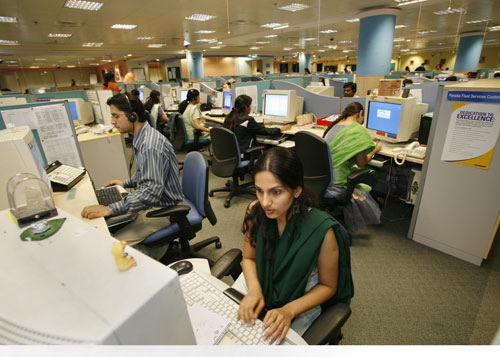Protection or promotion? Time India re-evaluates its bilateral trade agreements

First Post | 30 May 2016
Protection or promotion? Time India re-evaluates its bilateral trade agreements
by K Yatish Rajawat
The government has been busy with two years celebration of the Modi government, while a lot of statistics are being bandied around to show success. The one that is unlikely to be talked about is the continuous slippage on exports from a drop of almost 17 per cent in the last two years. Though the government cannot be blamed for these dismal figures in a time of global slowdown, this is one of those crisis that needs to be made an opportunity if policy makers handle it properly.
For a long time, the thinking in Indian government and policy circles has been that free trade agreement is the way to make exports grow. Anand Sharma, Minister in the UPA government measured his success by the number of FTA he signed. Every FTA signing was announced with great fanfare. In his hurry to notch up the numbers, Sharma never bothered with the details.
A trade negotiator who never bothered with the details is like a Judge who asks the prosecutor to write his judgement. Almost every agreement failed to protect India’s interest particularly on the services front. I had written in detail about this here. My basic argument was that almost every FTA has harmed India and acted as a conduit to imports in crucial industries like auto ancillaries and several others. If Mr Sharma was under some pressure from the lobbyists we do not know, but he has been able to disable the competitive edge of several job creating industries. It is not as if the new government also understands this as well as it should. But it is now looking at renegotiating its treaty with more than 47 countries.
A model agreement has also been put in place not by the Ministry of Commerce - the nodal body for such agreement, but the Ministry of Finance. Hence, the model agreement addresses tax demands that has been a contentious issue between MNC companies and the Indian government. And bilateral agreements have been used to argue against these tax demands. Vodafone, for instance, wanted international arbitration to be done under India-Netherlands bilateral agreement. Tomorrow, Facebook could also file an international arbitration proceeding for net neutrality in an European court.
The model agreement specifically forbids that such tax demands will be covered under any bilateral treaty. The draft is the easy part, implementing it across 47 countries is the difficult part. Unfortunately, there seems to be a turf issue — the model agreement is prepared by the Ministry of Finance, but the operating ministry is the Ministry of Commerce.
The myopia of the Ministry of Finance when it comes to trade issues is visible in the draft agreement. One of the most important and most neglected components in the trade agreements has been on the services front where free movement of professionals is a desired outcome from India’s perspectives. The draft agreement handles it in an ham-handed manner by clubbing it as ‘Entry and Sojourn of personnel’ under Article 9, little realizing that it is not just the entry but work permits and visas that are a much bigger issue on the services front.
India has competitive advantage in services exports and they have gone up from $16.8 billion to $155.6 bn in 2014, making India the eighth largest services exporter in the world. Almost every country has set up entry level barriers for Indian professionals to work. This has to be balanced with the entry of their exports into India and has not been negotiated well.
Even the treaty with the ASEAN countries has till date not been able to implement the free movement of Indian professionals. India has granted free entry to every kind of goods from these countries. The turf war between the two ministries cannot be the reason that India loses out on the export front.
In the two years of the current government, exports have contracted by almost 17 percent — from $314.405 billion in fiscal 2013-14 (April 2013 to March 2014, to $261.13 billion in 2015-16). Even imports have dipped by a considerable 16 percent during the same period — from $450.12 billion to $379.6 billion. The drop in exports cannot be linked to just the agreements, as there has been a global slowdown and the demand for commodities have dropped dramatically. But the situation cannot continue as it is and the Ministry of Commerce needs to weigh in with a better and more comprehensive methodology for trade agreements.
Another factor that has to be incorporated into trade treaties is global supply chains for intermediate products linked to manufacturing in India. Currently, global supply chains are finding direct consumers into India via e-commerce engines and dummy corporations in Singapore.
If trade has to drive for employment and economic growth, it needs a better management and understanding by the government. Knee-jerk reactions cannot be the basis for such agreements.
K Yatish Rajawat is a business strategist and policy commentator based in New Delhi. He tweets @yatishrajawat





